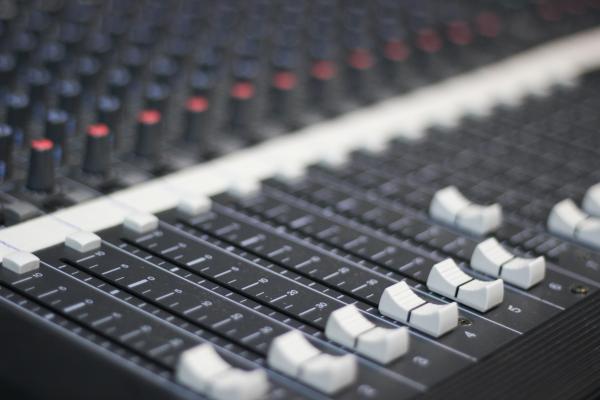Get A Professional-Quality Sound With These Top Tips
Are you an audio enthusiast or music producer looking for a way to get your sound to the next level? With so many different ways of producing and mixing, it can be difficult to know exactly what tips and tricks will help you reach that elusive professional-quality sound. Fear not! In this blog post, we'll discuss top tips from experienced professionals in the audio industry on tailoring your workflow for optimum results. From selecting the right headphones and microphones to the importance of mastering techniques, exploring these suggestions could help you take your mixes to new heights. Read on for a detailed breakdown of how to maximize quality and accuracy when crafting eye-catching sounds!
Invest in high-quality equipment
Microphones are the first piece of equipment to consider, as they can greatly impact the overall sound quality. Look for a microphone that fits your specific needs, whether it's a condenser microphone for vocals or a dynamic microphone for instruments. An audio interface is also a crucial component, as it acts as the middleman between the microphones and your computer. Investing in a quality audio interface can improve sound quality and reduce latency. Finally, speakers and headphones are essential for the accurate monitoring of your recordings. At Descriptive.Audio, you can check the reviews and recommendations of equipment from popular brands. It's important to find the right combination of equipment that works for you. Don't skimp on these crucial pieces of equipment, as they can greatly impact the final product.
Research and understand the basics of acoustics
Acoustics, the study of sound, is an exciting field that has become increasingly relevant in a world filled with seemingly endless sources of noise. Understanding the basics of acoustics can help us to determine how sound behaves in a given space, which can be critical for a variety of industries, from designing concert halls to creating quieter working or living environments. With the ability to predict, measure and control the propagation of sound waves, acousticians play a key role in shaping the auditory environment around us. As such, delving into the complexities of acoustics is both a fascinating and essential task for those looking to gain a deeper understanding of the intricacies of sound.
Utilize software to adjust sound levels
Utilizing software to adjust sound levels has provided an unprecedented level of control and flexibility, allowing users to experiment with different EQ settings or compression techniques. Whether you're looking to achieve a more balanced sound, emphasize certain frequencies, or explore creative distortions, adjusting sound levels is a critical component of audio production. And with the vast array of software options available today, audio professionals are empowered with a greater degree of precision and customization than ever before.
Experiment with dynamic range
By utilizing effects such as reverb, delay, and chorus, one can create interesting textures and depths that add character and dimension to their music. However, it is important to approach this experimentation with a professional and academic mindset. One must consider the desired outcome and carefully select the appropriate effects to achieve it. It is a delicate balance, as too much of any effect can easily overtake the song and disrupt its intended flow. With patience and attention to detail, the incorporation of dynamic range can truly elevate a piece of music to an entirely new level.
Record multiple takes - Practice makes perfect
As the adage goes, practice makes perfect, and this holds true with recording as well. Whether you're a musician laying down tracks in a studio or a voice actor recording lines for an animated feature, taking the time to record multiple takes can mean the difference between a passable result and an exceptional one. By recording multiple takes, you give yourself the opportunity to experiment with different tempos, phrasings, and emotions, and ultimately choose the take that best captures the artistic vision you're striving for. Although it may seem time-consuming, taking the time to record multiple takes can save you time in the long run by producing a final product that is of the highest possible quality.
Make sure your mixes are balanced
This means that the volume levels of each individual track should be adjusted so that they all sit in relation to each other in a cohesive and pleasing way. By checking the overall volume level for each track, you can identify any imbalances and make adjustments as necessary. Taking the time to ensure that all tracks are well-balanced and sitting correctly in the mix will result in a more enjoyable listening experience for your audience, and will elevate the overall quality of your production. As an academic or professional in the field of audio production, the importance of balanced mixes cannot be overstated.
Investing in quality equipment is the first step and understanding the basics of acoustics is critical for any production. Utilizing a number of software tools to adjust sound levels and experiment with dynamic range should be the next couple of steps. Additionally, don't be afraid to record multiple takes if necessary, and make sure your final mixes are balanced in terms of volume level per track. Trying different techniques can generate inspiring results, no matter what type of genre or platform you may desire.

